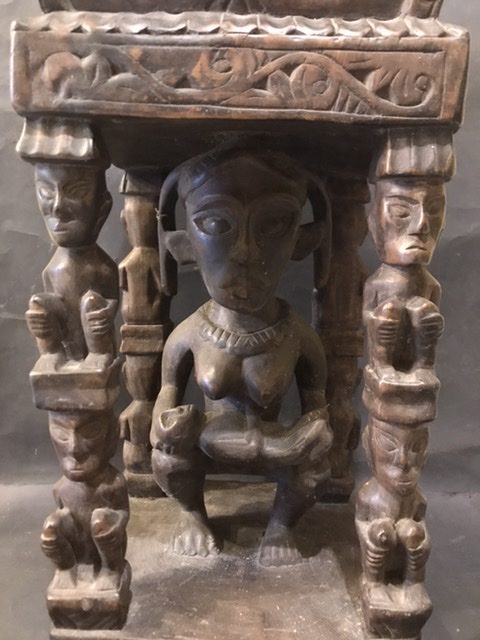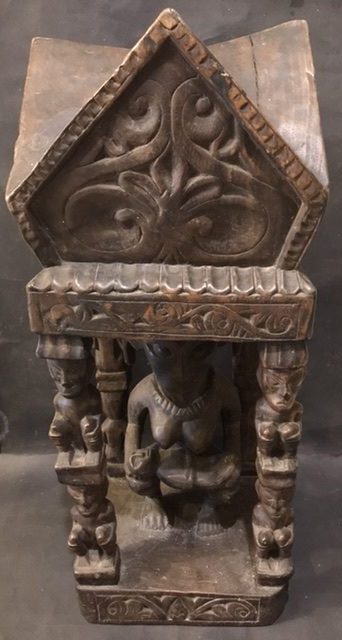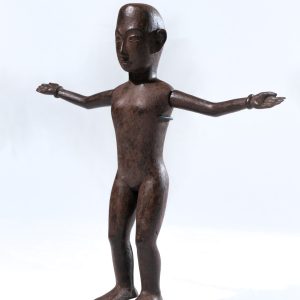Nias Statue
$540.00
NIAS STATUE
The people of Nias placed great value on wooden figures or adu. The sole purpose of the Nias statue was to fulfill ritual needs. Whether it is to ensure wealth or to perform specific beneficial rite. Niassan figures vary in size. From as small as 20 centimeters (7.9 in) in height to more than 2 meters (6.6 ft) tall.
Nias Statue Meaning
When an elderly person died, the family would make a wooden statue. Known as adu substances. The statue was unveiled on the fourth day after the death of the person. The shape of statue reflects the status of the person who used them. More powerful the owner, more impressive the statue will be. Nias people believed that the deceased person's spirits reside in the statue. So, all events that occurred in the family were shared with the ancestor statues through prayers.
Ancestor figures were believed to ensure fertility for the family, livestock and agricultural land. Sacrifices were made to the ancestor statues especially on important events. For Example, births, marriages and deaths. Ancestor statues were placed in the main room of the house. Sometimes more than a hundred. A missionary work in 1930 had recorded the removal of over 2000 "idols" from a house of new northern convert. Some missionaries even recorded houses collapsing. Because the weight of these ancestor figures. Small adu substance were bound together horizontally using a rattan and pegs.
History
In North Nias, large impressive ancestor figures are known as adu suraha salawa. In Nias language for portraits of honored ancestors. The adu suraha salawa represents the first known ancestor of a family. Often the founder of the village. The adu suraha salawa were usually placed upon a wall or on an altar (daro-daro). Another large ancestor statues are the adu hörö. Adu hörö ancestor statues are large, elongated, armless and wear high, forked headdresses. These statues are generally found in Central Nias, and rarely in South Nias.
Other wooden figures do not represent the ancestors. These wooden figures were created for many Reason. For Example, to heal specific illnesses, to protect villages, or to invoke supernatural beings to aid through rituals. These statues were generally crudely made, as opposed to the finely carved ancestor figures. Joachim von Brenner-Felsach classified more than 60 types of non-ancestor wooden figures. Source : wkipedia
Please contact us for more detailed pictures and questions
Additional information
| Weight | 15 kg |
|---|---|
| Dimensions | 30 × 30 × 80 cm |







Reviews
There are no reviews yet.